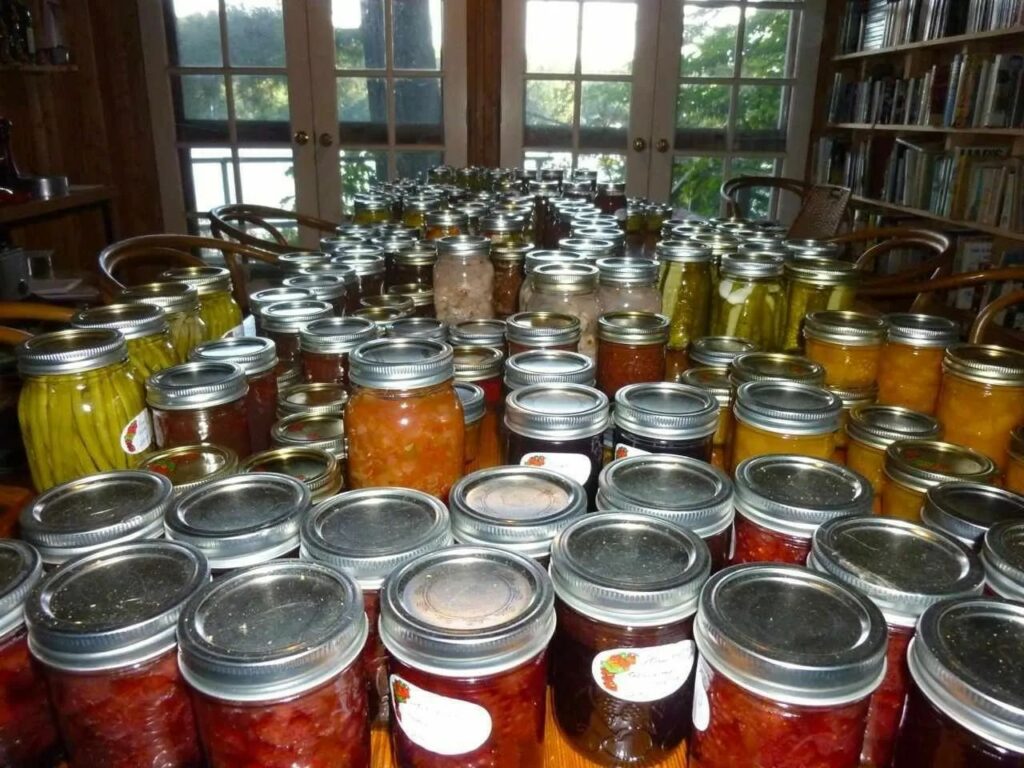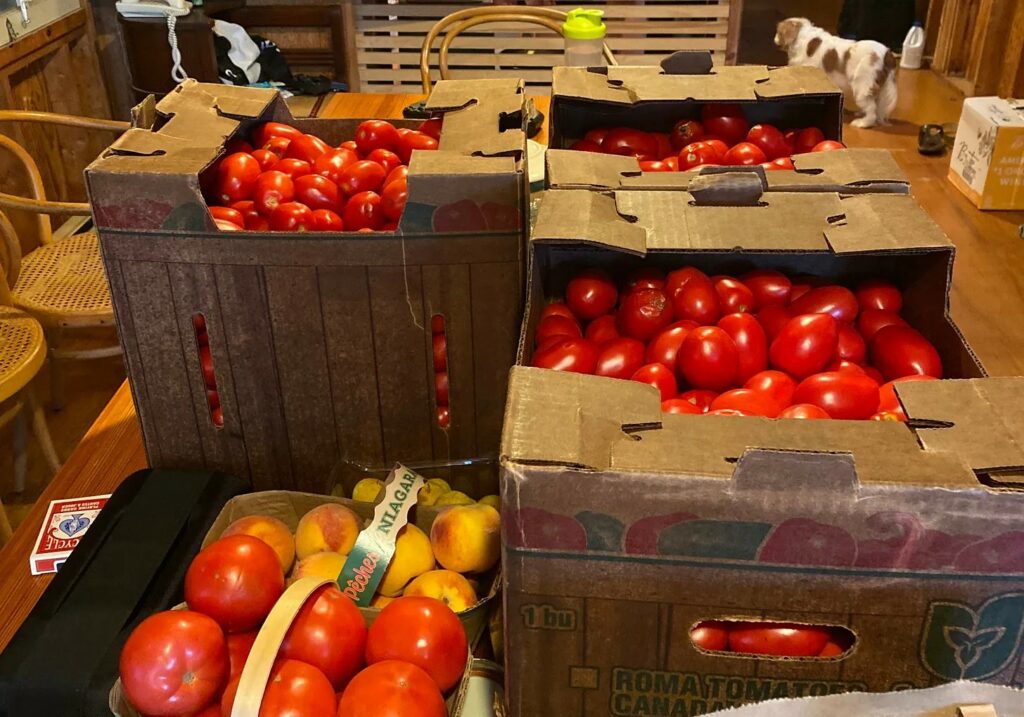Do we need to change the way we grow things, or change the way we eat?
by Lloyd Alter
Carbon Upfront!
The Toronto Star leads today with a story, “Ripe for a challenge,” in which climate change reporter Kate Allen describes attempts to grow strawberries indoors in Canada “as red-ripe and juicy as if they came out of a sunny field in July.” Canadians import C$6.2 billion more fresh and frozen fruits and vegetables than our food exports, “but a pandemic, wars, and the steadily thumping drumbeat of climate change have all exposed the fragility of this system.”
Many of the companies that anticipated a cannabis boom after legalization are pivoting to berries, hoping to attract funds from an X-PRIZE style competition funded by the Weston Family Foundation, the same family that owns the Loblaws grocery chain that we boycott for various reasons. Many of the indoor farms are near the Quebec border to take advantage of its cleaner electricity. According to the CEO of Fieldless, one of the indoor farms, “If you choose the right power source today, then you are more sustainable.”
Or, you could be exporting those clean electrons to the USA to replace coal-fired electricity there. If we are hearing the steadily thumping drumbeat of climate change, should we be using electricity in February to grow strawberries? Or should we question what we are eating? This is an issue that has troubled me for some time, and I wrote a section about it in my first book. Here’s an excerpt.
A decade ago, everyone was talking about the 100-mile diet, an experiment carried out by Vancouver writers Alisa Smith and J.B. MacKinnon where they ate food grown within a hundred miles of where they live, promoting the concept of local food. It was a fascinating and successful venture, turning into a book and a TV series.
I was writing about environmental issues for Treehugger and Planet Green, a website and a Discovery TV network that showed the 100-Mile Diet series. Meanwhile, I would go to dinner at my mom’s house, and in the middle of winter, she would be serving fresh asparagus flown in from Peru. I would explain how bad this was, and she would respond that she had grown up in the Depression when she would have no vegetables but potatoes. Then, in the fifties, she had canned vegetables, and in the sixties, frozen. She thought that it was just about the most wonderful thing in the entire world that she could go to the neighbourhood supermarket in the middle of winter and get fresh asparagus, and she was proud to serve it.
Meanwhile, I was having my own doubts about the 100-mile diet, and about the importance of local food. I was concerned about carbon emissions, and low mileage didn’t necessarily mean low carbon; research showed that a local hothouse tomato served out of season had a far higher carbon footprint than a tomato trucked up from Mexico.
My wife Kelly was writing about food for Planet Green at the time, and we became convinced that a seasonal diet was as important as a local one and ran our own experiment: the nineteenth-century Ontario diet. Ontario has a short growing season and a long winter (much longer in the nineteenth century), so the diet was wildly variable. In the spring, the asparagus was succulent and wonderful, so much better than my mom’s. In July, the strawberries were to die for, bearing no resemblance to the wooden ones from California. In August, tomatoes. So many tomatoes, in so many salads and pastas. Kelly would buy them and everything else by the bushel, and spend weeks canning them to get us through the winter.
By December or January, it was a different story. Potatoes. Turnip. Parsnips. More turnip. Root vegetable after root vegetable, and meat, lots of pork and beef because, back in the nineteenth century, animals could huddle together to stay warm until they were butchered and served. There are many interesting ways to cook a potato or a turnip, but by March, we were counting down the days until asparagus.
But I now love turnip and the excitement and pleasure that comes with the first asparagus, corn, or blueberry of the season. All these years later, we never buy Mexican or hothouse tomatoes; we still have jars and jars of them from last summer’s canning.
We are not so doctrinaire anymore and will buy a head of lettuce in January and a few limes for a margarita. But neither of us ever wants to look at a California strawberry or a hothouse tomato again.
Comment
During the pandemic a local hydroponic grower’s restaurant market disappeared so they reached out to local residents with their products. We got weekly deliveries of our selections. Pandemic over they went back to supplying restaurants but still offer produce to local residents. Here’s where the carbon gets more complicated because we used to have one vehicle making deliveries and now everyone drives (we sometimes ride the bus) to their location to pick up their produce. I’ve seen their now expanded growing site, climate controlled former light industrial/retail space. Not the most energy efficient building though they use heavy transparent plastic sheeting to wall off the actual growing areas rather than hvac the entire space.
Lloyd Answer:
I wrote about this (Stop Eating Fossil Fuels, Start Eating Food) a few years ago when people complained about how “In the worst scenario, a UK consumer driving six miles to buy Kenyan green beans emits more carbon per bean than flying them from Kenya to the United Kingdom.” I wrote:
Ultimately, to call out the current inefficiencies of the farmers’ market as a way to justify our industrialized, globalized food system is like scrapping a car at the junkyard because it needs an oil change.
It isn’t just about growing our food locally and buying it at the farmers market. To really change our food system so that we are not eating fossil fuels we have to look at the way our cities are designed, how our waste system works, how the distribution system is set up, and what we do in the developing world that has become our out-of-season supplier.
But making the decision to buy local and seasonal is a start.




bill
thanks for giving us something interesting and important to think about.
i actually don’t think about it much. without thinking about it i have given up meat and …the fruit and vegetables i can buy at Safeway. tastes like plastic to me. if i tried to think about it i think i would go crazy. but the answer is not Safeway. maybe we could replace out lawns with gardens and trade with neighbors within walking distance for variety.
maybe at the end of the day we will have to.